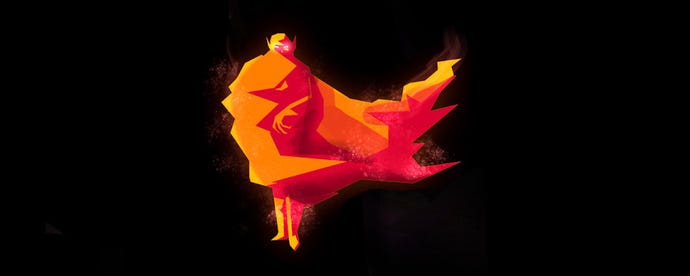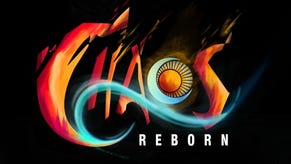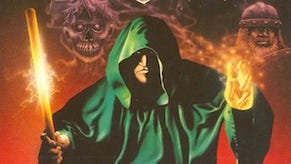Chaos: Reborn takes the XCOM creator back to his roots
Chaos: Reborn is a re-imagining of XCOM creator Julian Gollop's 1985 classic. Dave Cook plays a round against him, loses horribly and then writes about why strategy fans should be quite excited.
Julian Gollop really knows what makes a solid, tense turn-based experience. His 1985 title Chaos: The Battle of Wizards turned heads when it debuted on ZX Spectrum.
It saw two or more mages battling to the death by summoning a range of fantasy beasts and conjuring devastating spells. Like a game of chess, your chance of victory was improved by effectively reading your opponent's moves and thinking several steps ahead, while reacting intelligently to actions on the board. It was ahead of its time.
These are the hallmarks of any good turn-based title, and those traits would later go on to inspire Gollop's first XCOM game UFO: Enemy Unknown. After spending an afternoon playing Chaos: Reborn with him, and chatting about the intricacies of the genre, it was clear that he hasn't fallen out of touch with what makes these experiences so compelling. From the pressures of a round timer that's just short enough to keep you sweating, to the feeling of dread that comes after you botch a move, this remake has all the right ingredients.
”Overwhelmed by the choices at hand, I quickly asked Gollop for help. It’s high level stuff, but after a few turns the beauty of his mechanics seeped through and a heated game of subterfuge and aggression was in full swing.”
"One of the things that really kept me thinking about Chaos was the fact that so many people, over so many years, have tried to do remakes of the game," he tells me over Skype, "and there's around 35 remakes that have been made publicly available that I know about, and certainly hundreds more attempted.
I was speaking to a Finnish guy the other day and he said there was a Finnish version, and it kind of keeps reminding me that there's something enduring about the original game that people see as a bit special and unique.
"That kept me thinking about it and wanting to come back to it and to do a proper revisit of the original. So I played it again and thought about what makes it attractive to people that they still remember it after all these years, and in analysing the core game mechanics I said, 'look this really works, I need to keep this basically the same,' but to just build a better infrastructure around the game with more options, and to think about how to build on it rather than fundamentally change it."
We decided to play a quick 1v1 match, which plays out on a hex-based map and gives each wizard a randomised stock of spells from a total pool of 80. These can be anything from monster summons, ranged spells, enchanted weapons for your mage, defensive traps, buffs, debuffs, area-of-effect attacks and even spells that wrap the playing field itself. Overwhelmed by the choices at hand, I quickly asked Gollop for help. It's high level stuff, but after a few turns the beauty of his mechanics seeped through and a heated game of subterfuge and aggression was in full swing.
”It’s a mixture of Hearthstone style stock creation and XCOM’s grid-based movement rolled into one taxing, yet extremely engrossing format.”
The aim is to be the last wizard standing, and you can protect yourself by summoning from a collection of 24 creatures each with their own attacks and advantages in the field. Some - like the eagle - can fly to reduce incoming damage or receive a lower penalty when traversing elevated ground.
Others like the Pegasus and Unicorn can be ridden as mounts to increase your moving distance, and because they must be killed before another player can harm your mage, act as an armour boost. There are so many stats and variables to consider, but that simply makes the strategic element shine much brighter.
"There are a lot of random elements to the game," Gollop explains, "from the summoning to the combat, so you can't really rely 100% on anything. This can allow inexperienced players to become more talented players, but on the other hand there are a lot of tactics to consider. In every decision you make in the game, there's a better decision and there's a worse decision based on your evaluation of the probabilities and so on."
Every spell in Chaos: Reborn comes with a casting chance, and fits into three world states: Chaos, Law and Neutral. If all players on the map collectively cast more Chaos spells than the other two strains, then then spells of that type will have much lower failure rates, and the map itself will start to glow red. Where it gets interesting is that summons can be cast as real or illusions. The latter always works 100% of the time, but another mage can simply cast their one and only 'Disbelieve' spell on the creature to discard it for good.
”Our match was due to end after just 20 turns, but it lasted quite a while as we pursued each other across the stone cavern, laying down traversal-blocking spiked shrubs to block movement, while carefully positioning our squad of summoned beasts to keep threats at bay.”
The trick is that you never really know which summons are real or false, giving battles an espionage edge. If you know that a Green Dragon only has a casting success rate of 20% and an enemy mage manages to create one into the field, then there's a good chance they cast it as an illusion.
But maybe, just maybe, they summoned it legitimately, and you're running the risk of wasting a turn on trying to banish it. That's a great method of risk-reward gameplay right there.
"The other spells will be all kinds of stuff," Gollop elaborates, "Gooey Blobs, Shadow Words, magical attacks, magic castles, Fountain of Life, and you've got more Chaotic spells like Plague which affects multiple creatures who are all connected adjacently.
"There's a terrain-altering spell called Volcano which will cause the ground to rise up and spew out some lava, and the Earthquake which can cause part of the map to split away, causing a little bit of a gap. There's general area-of-effect spells, and some positional spells like Radiant Blast which shoots out bolts in six directions from your wizard. So there'll be a lot of things for you to play with basically."
While the mode we played saw each wizard's spell selection randomised, there is another mode that allows players to construct a custom deck from the 80 available spells. This could be the hardest-fought and potentially mind-bending method of play, especially once you start to drill down into the variables and anticipation of how others play. It's a mixture of Hearthstone style stock creation and XCOM's grid-based movement rolled into one taxing, yet extremely engrossing format.
Our match was due to end after just 20 turns, but it lasted quite a while as we pursued each other across the stone cavern, laying down traversal-blocking spiked shrubs to block movement, while carefully positioning our squad of summoned beasts to keep threats at bay.
Gollop's mage held a close range magic sword, while my bow gave me a ranged edge, and the tug-of-war gameplay saw us patiently waiting for the other to make a fatal error. That honour was mine, and that pang of disappointment coupled with feeling rather foolish hit me in the gut as I saw my skeleton warriors and goblins cut down to size.
Though unfortunate, it's this pressure and underlying tension that makes games like Chaos: Reborn so utterly endearing. I proposed to Gollop that this template is ripe for eSports play and he revealed that there will be official tournaments and rankings to further the game's profile among the competitive space. Judging by the volume of fan-made Chaos projects out there today, it's clear there still exists a healthy and avid fan base eager to sample the official remake.
That said, current interest in turn-based games is healthy across the board, thanks to the recent success of the Firaxis XCOM reboot and games like The Banner Saga and Fire Emblem: Awakening. Has there every been a better time to revisit one of the fathers of the genre? Maybe not, but if you're a fan of the genre by any measure, you'd do well to keep an eye on this one.











